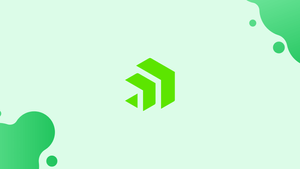Introduction
The realm of configuration management and automation can seem complex without a solid grasp of fundamental terms and principles.
Delve into essential terminology related to configuration management and automation tasks with our detailed Chef Glossary. Elevate your comprehension of Chef and empower your expertise in automation seamlessly.
Chef Terms
B
Berkshelf: The traditional tool used to handle cookbook dependencies should be replaced with Policy files for more effective management.
C
Chef: The chef command-line tool is the primary interface for managing your Chef development environment, including repositories, cookbooks, recipes, attributes, templates, custom resources, and Ruby dependencies.
ChefDK: The previous set of tools used for developing Chef Infra cookbooks has been replaced by Chef Workstation, which is now the recommended choice.
ChefSpec: ChefSpec is a unit-testing framework designed specifically for validating Chef Infra cookbooks.
Chef Automate: A comprehensive range of enterprise features ensuring ongoing visibility across application, infrastructure, and security automation processes.
Chef Infra Client: A command-line tool responsible for executing Chef commands. It is also the name of the Chef installation on a node.
Chef Infra Server: The Chef Infra Server serves as a central repository for configuration information. It houses cookbooks, node policies, and metadata for managed nodes. Nodes interact with the Chef Infra Server via Chef Infra Client to retrieve configuration specifics like recipes, templates, and file distributions.
Chef Workstation: A set of tools designed to assist in the development of Chef Infra cookbooks. Utilizing the comprehensive full-stack installer, it provides all necessary components in a single package to streamline your setup process. Accessible for download at Chef Downloads.
chef-client: The chef-client encompasses both the local command-line tool and the program running on nodes. It enables you to enforce system configuration compliance using policy code. By utilizing the chef-client command line tool from your local machine, you can communicate instructions to the node's program. The chef-client is installed on nodes through the bootstrap process from your computer and configured to run at intervals to maintain ongoing configuration compliance.
chef-repo: The organizational framework where cookbooks are created, tested, and managed. Explore a sample of the chef-repo.
chef-zero: An agile Chef Infra Server that operates in-memory on the local machine while a Chef Infra Client run is in progress, commonly referred to as local mode.
Cookbook: Cookbooks serve as the fundamental building blocks for configuration and policy distribution in the Chef Infra ecosystem.
Cookstyle: A linting tool that assists in writing higher-quality Chef Infra cookbooks by identifying and automatically resolving style, syntax, and logical issues within your code.
Custom Resource: A Chef Infra Client extension that enables you to package and distribute your own reusable resources as part of a cookbook.
D
Data Bag: A data_bag is a JSON-formatted global variable stored on a Chef Infra Server, providing accessible data for use within the infrastructure.
E
Environment: An environment serves as a bridge between an organization's operational workflow and the configuration management capabilities offered by Chef Infra Server.
F
Foodcritic: An outdated linting tool used for static code analysis on cookbooks. Cookstyle is the recommended replacement for this tool.
K
Knife: A command-line tool that facilitates communication between a local chef-repo and the Chef Infra Server. Utilize it for node management, cookbook handling, role assignments, data bag operations, environment configurations, node bootstrapping, Chef Infra Server searches, and additional functionalities.
L
Library: A library enables the integration of custom Ruby code into a cookbook, expanding the capabilities of Chef Infra Client by either enhancing existing classes or introducing entirely new functionalities.
N
Node: A node refers to any physical, virtual, or cloud-based device managed and configured by an instance of Chef Infra Client.
Node Object: A node object represents the historical record of attributes, run-lists, and roles used to configure a node managed by Chef Infra.
O
Ohai: Ohai is a utility utilized for identifying node attributes and subsequently supplying these attributes to Chef Infra Client at the beginning of each run.
Organization: An organization represents a single Chef Infra Server instance, encompassing all managed nodes and workstations that interact with the Chef Infra Server via the API.
P
Policy: Policy settings enable the mapping of business and operational requirements, such as processes and workflows, to configurations and objects stored on the Chef Infra Server. This includes roles, environments, and data bags.
R
Recipe: A recipe is a compilation of resources that instruct Chef Infra Client on how to configure a node.
Resource: A resource is a declaration of configuration policy outlining the intended state of an element in your infrastructure, along with the actions required to achieve that state.
Role: A role serves as a method to categorize common patterns and procedures shared among nodes within an organization under a specific job function.
Run-List: A run-list outlines the complete set of configuration parameters required to bring a node managed by Chef to the desired state, specifying the sequence in which these settings are implemented.
T
Test Kitchen: Test Kitchen is an integration framework within Chef Workstation that automates the testing of cookbook data across various platforms and test suites.
U
Unified Mode: Unified mode merges the compile and converge stages of a Chef Infra Client run into a single phase. In this mode, the Chef Infra Client compiles and executes a custom resource sequentially, following the order from top to bottom. Unified mode specifically applies to custom resources and does not impact other resources or recipes.

